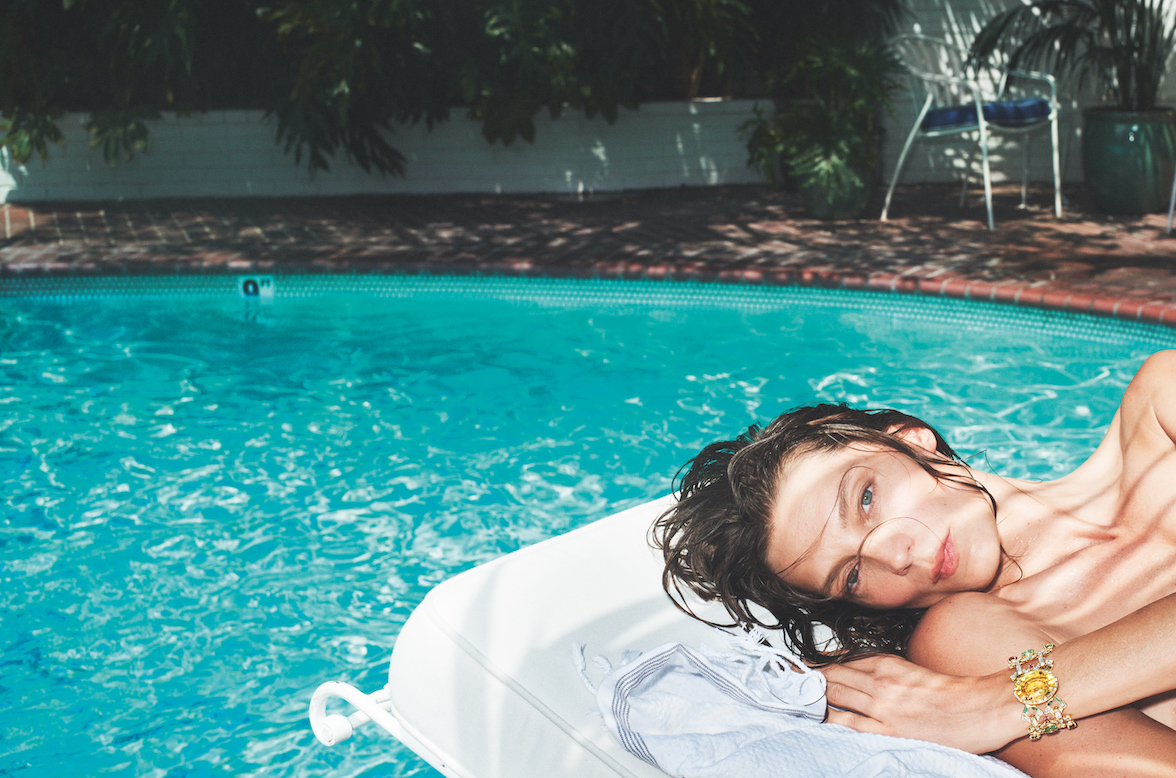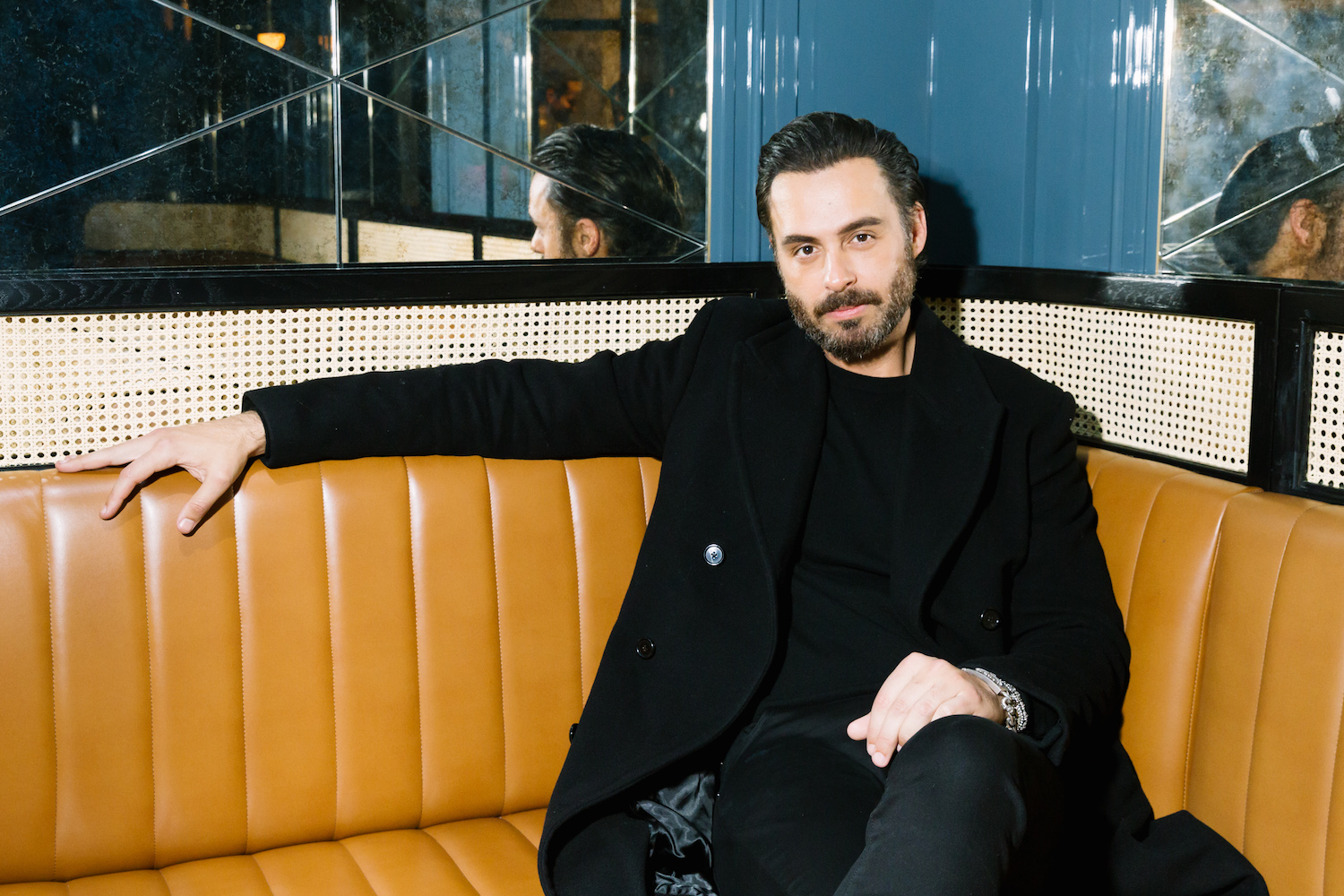Donna Huanca’s artistic practice engages directly with the body, exploring how we adorn or conceal ourselves, and from where we derive a feeling of strength and empowerment. Whether in her collaborative performances, layered paintings, or visceral sculptures, touch is critical to her work.
The tactile nature of Huanca’s process recently found a novel surface, thanks to a collaboration with Louis Vuitton’s ongoing series of artist-imagined “Artycapucines.” With a collection that now boasts 18 designs—with new additions this year from Huanca, Gregor Hildebrandt, Huang Yuxing, Vik Muniz, Paola Pivi, and Zeng Fanzhi—the luxury house invites creatives to work with its team of skilled artisans to put their vision onto limited-edition bags. The classic Capucines handbag, named after the street in Paris where Louis Vuitton first opened in 1854, was introduced in 2013. Its curved handle and trapezoid shape allow for unbridled ingenuity and innovation between artist and artisan, experimentation with techniques and materials on the handle, body, base, strap, and even logo.
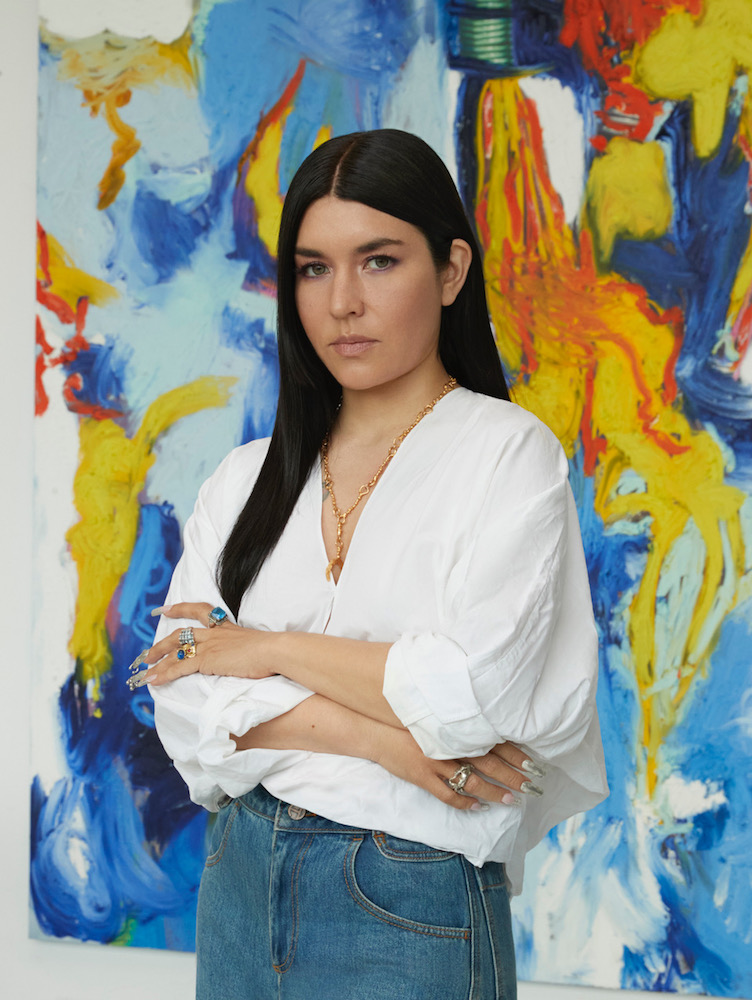
Donna Huanca in her studio, photo by Thomas Lohr, courtesy of Louis Vuitton.
Huanca approached the bag like she does her sculpture, considering it inside and out and using images from her “PIEDRA QUEMADA” performance and installation at the Belvedere museum in 2018. The collage aspects of her paintings and use of materials like metal, skin, and hair were translated into three ways of embroidering, later hand-painted to create a feeling of depth between shades of blue and white.
Whitewall reached out to the artist to learn more about partnering with Louis Vuitton, as well as her exhibition “ESPEJO QUEMADA,” which is currently on view at Ballroom Marfa through January 2, 2022.
Whitewall: What was the starting point for your collaboration with Louis Vuitton on the “Artycapucines” collection?
DONNA HUANCA: I wanted to think of the “Artycapucines” bag the way I think about sculpture—in my sculptures, I always consider the interior and the exterior of the body, thinking about how we derive protection and strength from materials that we adorn or conceal ourselves with.
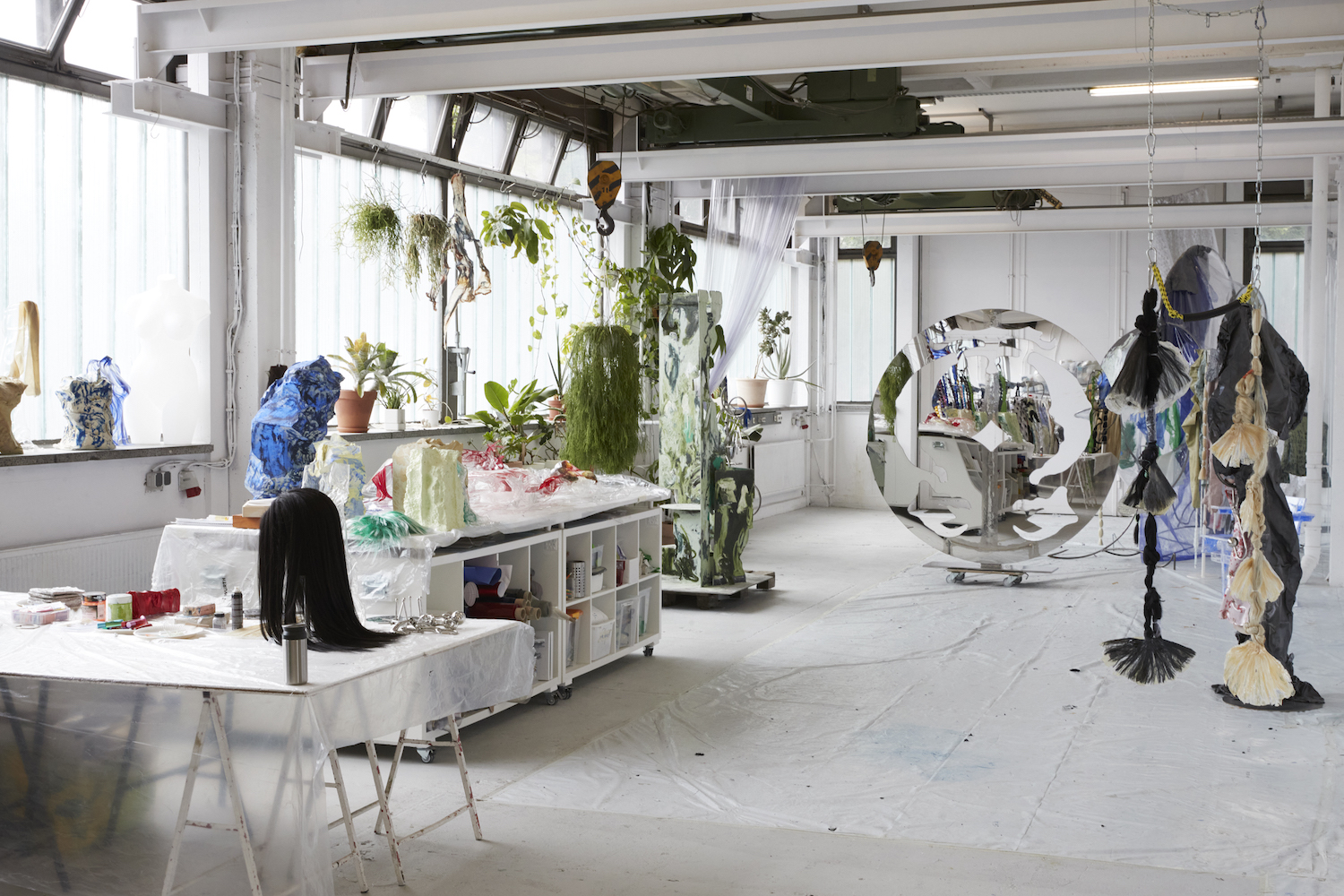
Photo by Thomas Lohr, courtesy of Louis Vuitton.
WW: Can you tell us about creating the Cara de Fuego and Muyal Jol paintings that were then 3-D printed onto the bag?
DH: The Cara de Fuego and Muyal Jol paintings both incorporate images from body paintings that were part of the “PIEDRA QUEMADA” performance and installation at the Belvedere museum in 2018—an exhibition that was really important to for me and that I am reflecting on from where I am now.
WW: How were you hoping the color, texture, and movement of the works would be translated?
DH: I wanted the tactility of my work to come through in this bag, to take the textures from my practice, from metal and skin and hair, and to transmute them in some ways for this purpose.
WW: Can you tell us about your vision for adding elements like embroidery to the piece, which was also hand-painted?
DH: I really wanted to work with the incredible savoir faire of the house of Louis Vuitton, to create a really intricate and textured surface that can be so contemplated with.
WW: What was it like working with the Louis Vuitton atelier and master craftsmen on this collaboration?
DH: It was incredible to collaborate with such skilled craftspeople. As an artist, I am often bringing a vision to life with my own hands. To work together with a team and with all of their various skills to create this bag was very rewarding.
WW: How did you arrive at the choice of metal hoops for the handle?
DH: Metal is a reoccurring element in my sculptures, and as a texture and material I wanted to bring that through from my practice. These handles were inspired by sex toys, and again I’m using materials that go in and outside of the body—in this case the purpose is to bring pleasure.
WW: How do they relate to your recent series of metal sculptures?
DH: I’ve always worked with metal in my sculptures, but I recently created a work called SCRYING CON DIOS(A) for my exhibition at Ballroom Marfa. For that work, which is in the outdoor space at the museum, I was really struck by the landscape and the vast sky above the desert. The sculpture has a mirror-like quality, to reflect the rhythm of the sun and the moon, so that it responds to the temperature and the environment. I was thinking about and creating this work around the same time as making the bag, so they are absolutely connected, in thinking about reflection and how it is responding to the surrounding environment.
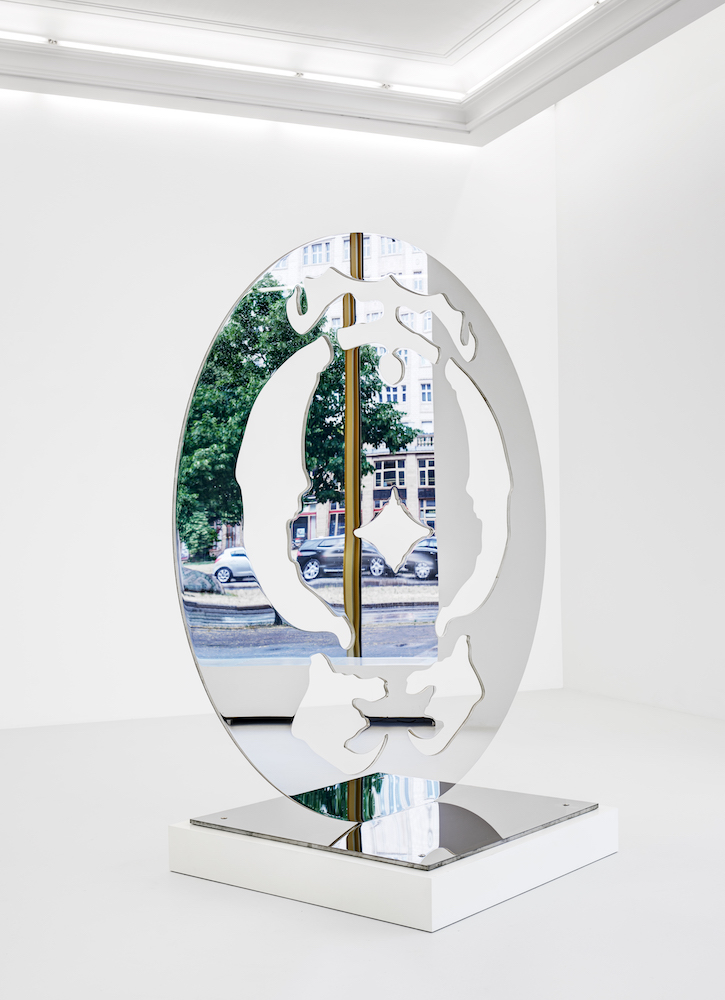
Donna Huanca: Espejo Quemada, Photography Matthias Kolb, Courtesy Peres Projects, Berlin
WW: Is there an aspect of this collaboration—whether process or material— that you’ll take back to your studio?
DH: Collaboration is intrinsic to much of the work that I do, but in the last year we haven’t been able to work with others in the same way. This opportunity to get back into that process has been really inspiring.
WW: What do you think it will be like to see your work for this project out in public—being worn and carried around? Your work is so closely related to the body. What was it like creating a piece like “Artycapucines” to be worn on the bodied, carried/held?
DH: I do think a lot about the tools, codes, and materials that we use to communicate with one another, and adorn ourselves with, and so in some ways this feels like an extension of that theme in my practice. I believe that the most important aspect in all artworks is how it lives on beyond the artist and is taken into the lives of the viewer. I am excited to think of how this work will travel and complement the owner.
WW: How do you see this collaboration in relation to the performance aspect of your practice?
DH: My paintings are rooted in collage—materials from the collective performances are printed on canvas and then layered with paint. There is a layering of temporalities in the paintings, distilling the movement from performances into the stillness of the work, drawing from the collective durational work of the body paintings and performances. In this way, this bag is also a collage of previous performances.
WW: As you mentioned, you currently have a solo show on view at Ballroom Marfa, entitled “ESPEJO QUEMADA.” How is this new body of work a reflection on our current moment?
DH: The title of this exhibition is called “ESPEJO QUEMADA,” which means “burnt mirror.” For this exhibition, I was thinking about the works as portals, thinking about the capacity for some works to transport us to different points in our lives. Thinking about the past and future is in some ways always about control—moments of catalysts and the possibilities for change. I was also working with mirrored surfaces and looking at how reflection can provide a different type of perspective into our present context.
WW: How has the past year, when our bodies, movement, and touch have been so restricted, impacted your process and inspiration?
DH: In terms of my process, what has been missing is the aspect of touch and embodiment that is so crucial to my practice—and the ability to collaborate with others.
WW: You created your first outdoor sculpture for the show, made in steel. Can you tell us about this piece and what it was like to create an outdoor work?
DH: When I first visited Marfa, I was struck by the desert and the landscape where the museum is situated. I really wanted the sculpture to both react to and be camouflaged into that in the environment—the sky and the cosmos, especially. The sculpture is sitting on an outdoor drawing that can only be seen from the sky above.
WW: You’ve described your work as offering a pause that is rare in today’s world. How in your own practice do you create that pause for yourself?
DH: It is necessary for me to spend a lot of time in nature, which I find incredibly inspiring and allows me to get close to textures and colors from different ecosystems. I also have a meditation practice that helps me to stay present. Both of these outlets are therapeutic and allow me to return to my work with a heightened sense of awareness.
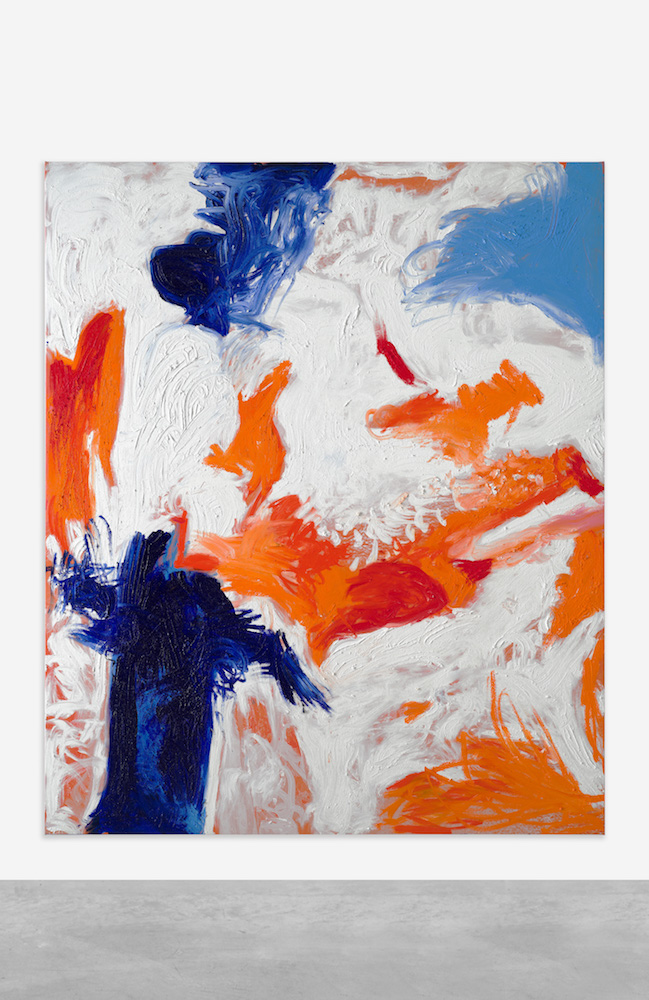
Photography Matthias Kolb, Courtesy Peres Projects, Berlin
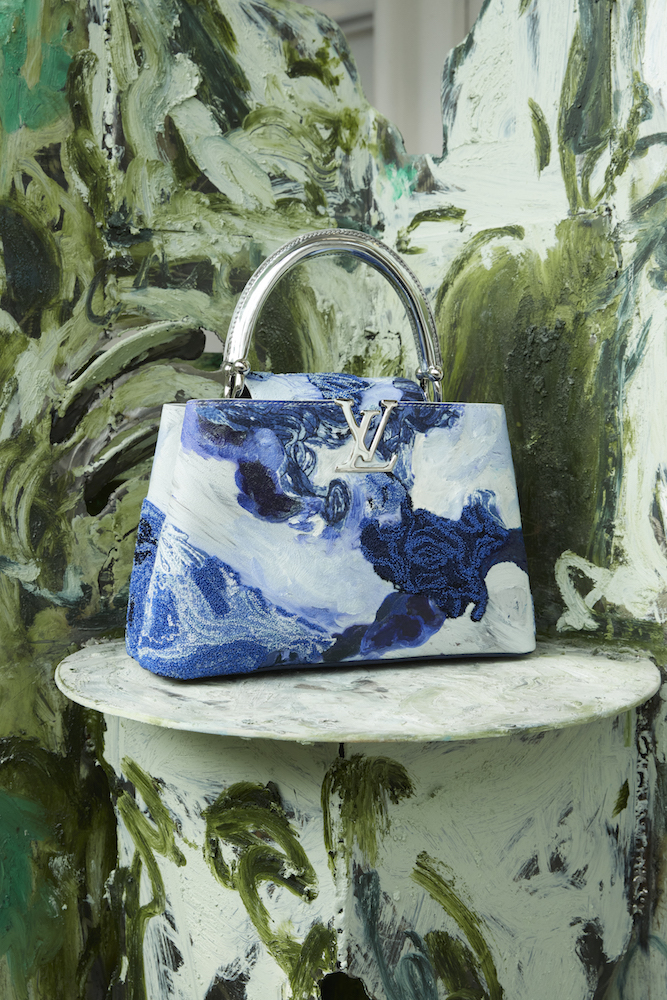
Louis Vuitton Artycapucine, Photo by Thomas Lohr, courtesy of Louis Vuitton.





